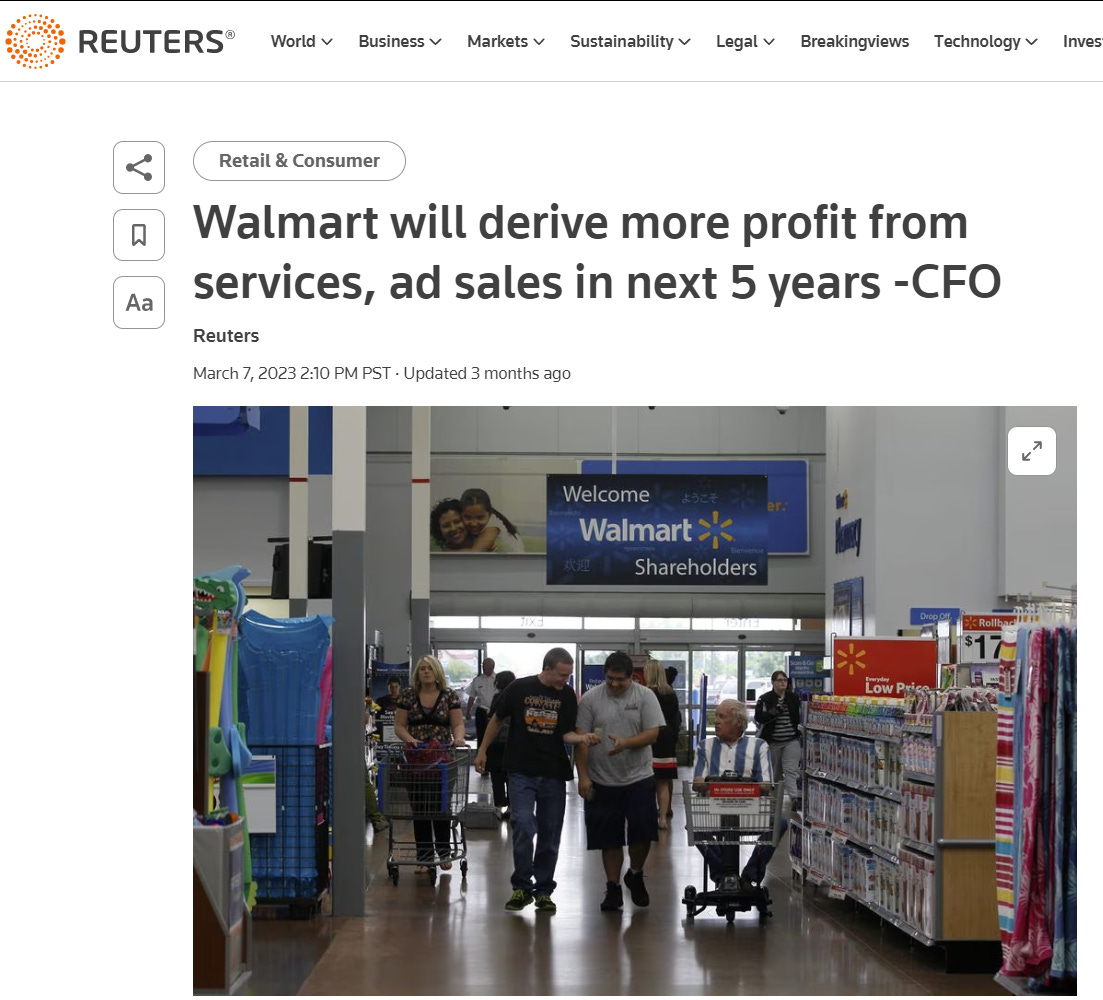Perhaps not EVERYTHING can be an ad network.
Do the positive-sum economics of Retail Media Networks stand up to logic?
The positioning of Retail Media Networks (RMN’s) has started to bother me. Apparently RMN’s are a positive-sum game where the profits from selling ads may end up exceeding the profits from being a retailer and selling stuff.
This strikes me as wildly non-intuitive on a macro basis. Are RMN’s some sort of Perpetual Motion Machine for advertising? Will the RMN pie just grow and grow as more ads are jammed in front of shoppers by more retailers and me-too RMN’s?
An RMN’s value isn’t generated or sustained solely by the retailer.
Retail media draws its value from brand spend
Let’s think for a moment how shopper demand is generated on a macro basis. Retail media exists "down-funnel" from TV and other mass media channels:
Mass media like TV (whether linear or digital) drives brand awareness and shopper desire.
A desire to buy things drives shoppers to retailers.
At this point the retailer can monetize shopper traffic via an RMN.
Those are the dominos that have to tip over in order for RMN's to work. Note that the first domino has nothing to do with the RMN.
Brands are investing in two places: first to spark demand up-funnel (in mass media) and second to put their thumb on the scale and win the sale at the shopper’s point of decision (via RMN’s). An RMN’s value isn’t generated or sustained solely by the retailer and retailers can’t just take shopper demand for granted.
Shopping is a byproduct of advertising, not the other way around.
How much is a sponsored listing worth in a world with no shoppers?
I do understand that a retailer has a loyal, built-in customer base and valuable retail infrastructure irrespective of brand advertiser spend. However, if all non-RMN advertising suddenly went dark, retailers would start to see declining traffic and revenue as shoppers lost interest in buying stuff or trying new products.
Shopping is a byproduct of advertising, not the other way around.
And if shopping is a byproduct of advertising, there must be an inherent cap on the total size of the RMN market.
Some of the logic around RMN's is starting to sound like sitting in a sailboat and blowing on the sail and expecting the boat to move.
It’s physics, people
Put another way: some of the logic around RMN's is starting to sound like sitting in a sailboat and blowing on the sail and expecting the boat to move.
Things just don’t work that way. The wind has to come from outside the sailboat and the speed of the sailboat is limited by how much wind there is. Nor can a sailboat simply add more sails; more sail area doesn’t let you “outrun” the wind.

(It is at this point in the analogy that I can envision some cheeseball vendor claiming they will provide speedboats mounted with giant fans to make the sailboats go faster…and you really can’t blame the vendor because you know a lot of buyers would fall for it)
As more retailers pile in and launch RMN's (or add inventory to existing RMN's), the aggregate size of RMN's (in terms of total available ad/sponsor inventory) will exceed the demand generated by higher-funnel brand spend and the ecosystem will have to rebalance. Beyond a certain point, you’re only going to sell so many boxes of Cheerios no matter how many sponsored listings you buy.
Perhaps not EVERYTHING can be an ad network.



Great point on Retail Media Networks.
I think Amazon uses retail as the loss leader for its cloud, media, logistic, and ad businesses. They can launch all sorts of high-margin businesses and become its own biggest customer on day one.